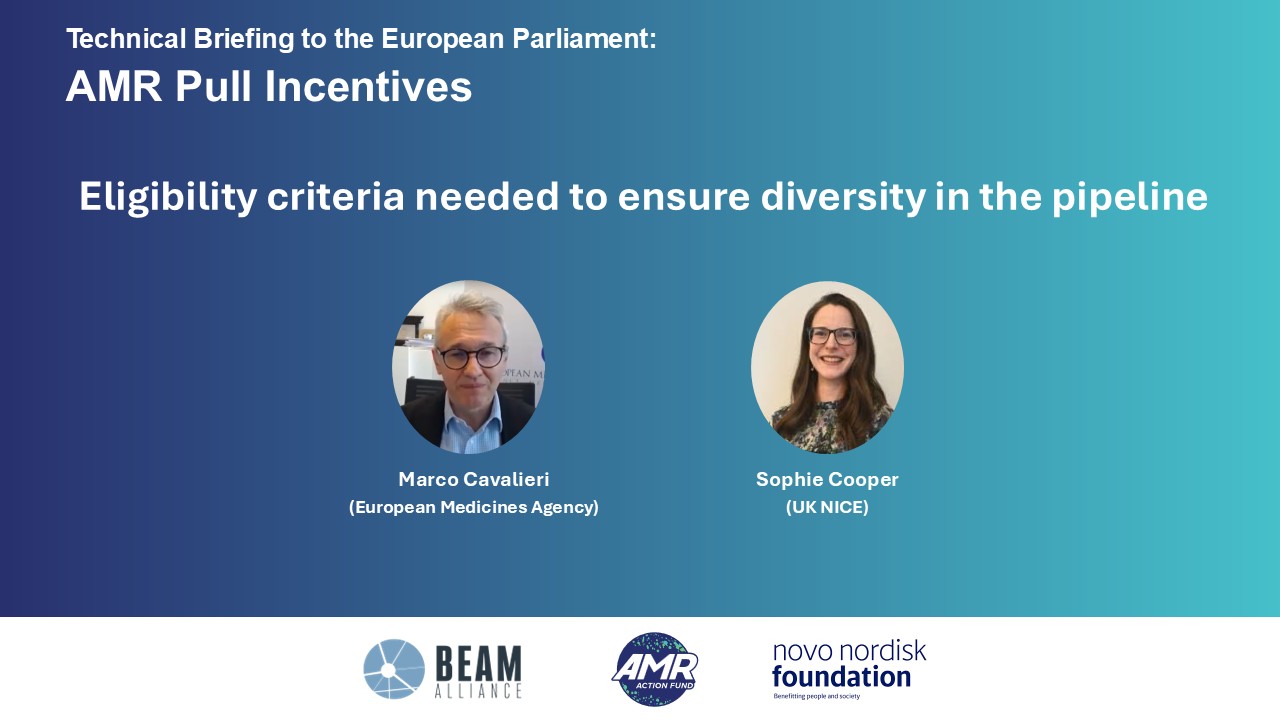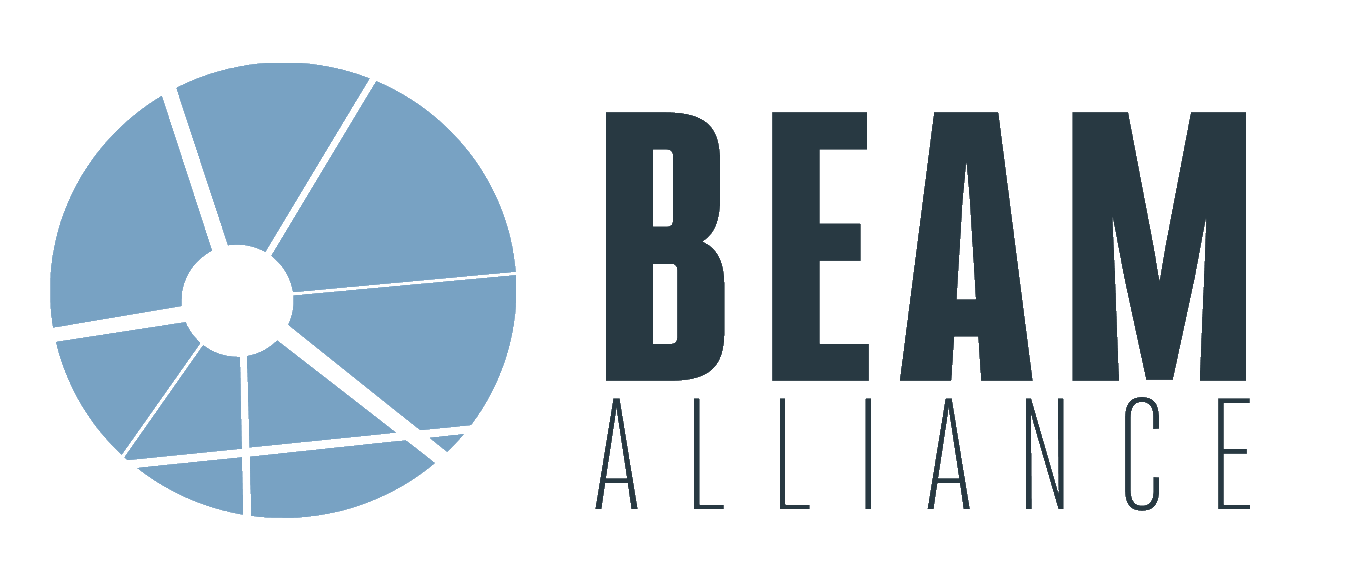Defining Eligibility for ‘Priority Antimicrobials’: A Critical Step for Effective PULL Incentives
- BEAM Alliance


The success of PULL incentives—designed to spur the development of new antimicrobials—hinges on a clear, well-defined process for granting ‘priority antimicrobials’ status. Yet, surprisingly little discussion has focused on establishing the criteria for eligibility. This gap is concerning: beyond deciding how much we want to incentivize research and development, we must also determine what kind of innovation we want. A recent conversation with Marco Cavaleri (EMA) and Sophie Cooper (NICE) shed light on this challenge.
The key role of an expert body
The European Medicines Agency (EMA) has activated its Emergency Task Force and is now ready to help define the criteria needed to incentivize meaningful innovation. These criteria must go beyond simplicity. While the WHO Priority Pathogens List (PPL) offers a useful starting point—and there’s likely no need for a separate EU list—it cannot be the sole determinant. Other critical factors, such as drug safety, ease of use, microbiological profile, and administration route, must also be considered. Above all, clinical impact should guide decisions, supported by a robust, credible, and adaptable evaluation process.
Lessons from the UK’s Subscription Model
The UK’s new subscription model uses a scoring system that emphasizes unmet medical needs (heavily informed by the WHO PPL) but also considers the drug’s profile and its impact on the health system. Although the model achieved the UK’s “fair share” of the global PULL mechanism, the cost-utility assessment proved overly complex—requiring significant resources and relying on models with substantial uncertainties. As a result, a scoring mechanism was developed in collaboration with clinicians and antimicrobial resistance (AMR) experts.
The current scoring grid is designed to reflect the state of the drug development pipeline and will evolve to avoid excluding promising candidates or stifling innovation. By including a broad range of criteria, the system aims to capture societal value and differentiate between products. The goal is not only to reward the highest-profile drugs but also those that address specific aspects of the AMR challenge. A “band” system introduces a reasonable level of flexibility: drugs don’t need to excel in every criterion to qualify for the highest rewards, but the process must remain rigorous, as it is ultimately a procurement decision.
Toward a Pan-EU Framework
A similar system could be adopted in the EU, provided the EMA receives the necessary mandate. Any pan-EU framework must account for the diverse approaches across member states though – some use cost-utility methodologies, while others focus on the medical service provided. Ideally, eligibility should be determined early in the development process to attract investor confidence.
BEAM’s Takeaways:
Eligibility criteria are the linchpin of effective PULL incentives. Even a multi-billion-dollar mechanism will fail if it is inaccessible or rewards the wrong products (such as antivirals instead of antibacterials or antifungals). Poorly designed incentives could stifle the very innovation they aim to foster. Defining the right criteria requires a collective effort, drawing on the expertise of clinicians, researchers, and policymakers.
The General Pharmaceutical Legislation (GPL) should provide broad guidelines for eligibility, leaving the EMA to refine the details. The GPL cannot capture the clinical nuances or public health needs with sufficient precision—this level of detail is best handled by experts.
To find out more:
Link to the video recording
Link to BEAM’s paper on criteria
Link to the list of criteria in the UK model

